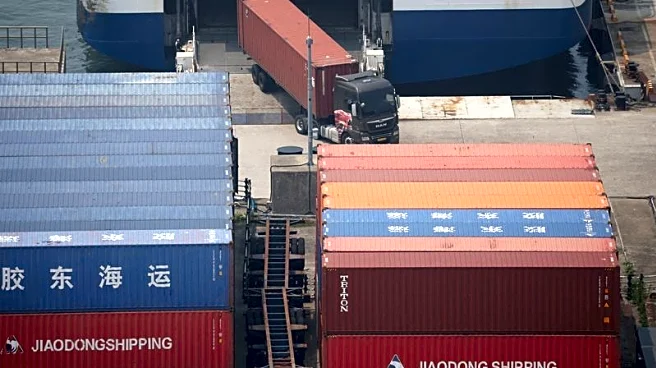What is the story about?
What's Happening?
Lululemon has experienced a significant 50% selloff in its stock, raising questions about its future prospects amid escalating U.S. tariffs and its international expansion strategy. The Trump administration's 2025 tariff hikes have imposed a 30% tariff on Chinese-sourced goods and 10% on other suppliers, leading to a projected 110 basis point decline in Lululemon's gross margins for the year. In response, the company has implemented modest price increases and diversified its suppliers, similar to strategies employed by peers like Abercrombie & Fitch. Despite these challenges, Lululemon reported a 21% constant currency revenue growth in China during Q1 2025, driven by strong demand for its premium activewear. The company plans to open new stores in Milan and Istanbul, focusing on markets with less tariff impact and rising middle-class spending power.
Why It's Important?
The tariff pressures on Lululemon highlight broader industry challenges, as apparel imports face an average effective U.S. tariff rate of 15.8%, expected to rise to 18-20% by year-end. This situation disproportionately affects lower-income customers due to a 17% price increase across the apparel sector. Lululemon's international expansion offers a strategic offset, providing a buffer against U.S.-centric risks and tapping into high-margin, high-growth markets in Asia and Europe. The company's ability to maintain brand loyalty and pricing power, despite modest price hikes, positions it favorably compared to fast-fashion rivals. However, the dependency on China remains a critical risk, as geopolitical tensions or trade policy reversals could disrupt operations.
What's Next?
Lululemon's strategic agility in diversifying its supply chain and negotiating with vendors demonstrates adaptability in a volatile trade environment. The company's dual-sourcing model aims to mitigate tariff-driven margin compression, but further escalations could pose additional challenges. Investors will be closely monitoring Lululemon's ability to balance affordability with profitability, as mismanagement could strain customer loyalty. The long-term opportunity lies in its capacity to capitalize on global demand for premium activewear, making it a calculated bet for patient investors with a multi-year horizon.
Beyond the Headlines
The deeper implications of Lululemon's situation involve ethical and operational dimensions, such as labor concerns in regions like Central America where the company is diversifying its suppliers. The shift towards international markets reflects a broader trend in the apparel industry, where companies are increasingly seeking to reduce reliance on U.S. operations due to trade policy volatility. This strategic rebalancing could lead to long-term shifts in global supply chain dynamics and consumer behavior, as brands navigate the complexities of international trade and market expansion.
AI Generated Content
Do you find this article useful?















